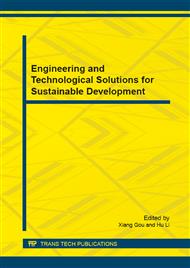p.59
p.63
p.67
p.73
p.80
p.85
p.90
p.95
p.102
The Analysis of Urban Road Traffic State Based on Kinds Floating Car Data
Abstract:
The analysis of the unban road traffic state based on kinds of floating car data, is based on the model and algorithm of floating car data preprocessing and map matching, etc. Firstly, according to the characteristics of the different types of urban road, the urban road section division has been carried on the elaboration and optimization. And this paper introduces the method of calculating the section average speed with single floating car data, also applies the dynamic consolidation of sections to estimate the section average velocity.Then the minimum sample size of floating car data is studied, and section average velocity estimation model based on single type of floating car data in the different case of floating car data sample sizes has been built. Finally, the section average speed of floating car in different types is fitted to the section average car speed by the least square method, using section average speed as the judgment standard, the grade division standard of urban road traffic state is established to obtain the information of road traffic state.
Info:
Periodical:
Pages:
80-84
Citation:
Online since:
November 2014
Authors:
Price:
Сopyright:
© 2014 Trans Tech Publications Ltd. All Rights Reserved
Share:
Citation:


